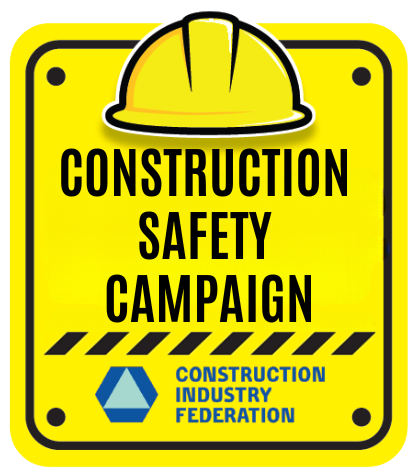Critical Risk
Safety Campaign 2025 – Tuesday 21st October

Back to Construction Safety Campaign 2025
Construction Safety Episode 3: Critical Risks
In Episode 3 of the CIF Construction Safety Campaign 2025 podcast, Sean Downey, Director of Safety, Education & Training, joins Willie Loughnane, Construction Director at Collen Construction, on-site at Grangecastle Power Station.
This ground-breaking project is the first of its kind in Ireland, a dual-fuel energy facility with a capacity of 1–10 megawatts (MW).
Watch the full episode below.
What are Critical Risks?
Critical risks are activities undertaken that could lead to significant injury or fatality if adequate control measures are not adhered to. As for the construction safety campaign of last year, the CIF is calling upon all companies and individuals engaged in construction work to reflect on the following aspects before proceeding:
1.
Do you know your critical risks?
2.
Are controls in place to manage these critical risks?
3.
Are your colleagues aware of these critical risks?
4.
Are the controls adequate for protection of safety, health and worker wellbeing?
‘Golden Rules’
Uisce Éireann utilises a suite of ‘Golden Rules’ to prevent accidents and to promote a safe working environment for its employees and contractors. The rules cover a wide range of scenarios, including:
Respirable Crystalline Silica (RCS)
Crystalline silica is a naturally occurring substance typically found in stone (particularly sandstone, shale, granite, and slate), in the sand and in products such as bricks, tiles, concrete and cement. Where concrete, stone or sand-based materials are altered (during formation, cutting, drilling, polishing or demolition) and made airborne, there is a potential for exposure to RCS dust. When any dust is inhaled, its point of deposition within the respiratory system is very much dependent upon the range of particle sizes present in the dust; the respirable fraction (smallest particle size) of crystalline silica dust can penetrate deep into the lungs.
Elimination and substitution of RCS containing materials, dust extraction and/or dust suppression are the primary measures advised to control potential exposure., with the following advice given:
- Prepare written risk assessments highlighting the key hazards, risks, and controls in place
- Always assume that exposure is likely to occur and protect according to the level of risk identified from risk assessment
- Use safe systems of work to reduce exposure
- Use dust suppression techniques
- Use of engineering controls such as local exhaust ventilation
- Use / store personal protective equipment according to instructions.
Resources
HSA – Risk Assessment Method Statement (RAMS) – Guidance Document
HSA – Risk Assessment Method Statement (RAMS) – Interactive Template
Uisce Éireann – Golden Rules – Confined Space
Uisce Éireann – Golden Rules – Electrical Energy
Uisce Éireann – Golden Rules – Excavations
Uisce Éireann – Golden Rules – Lifting Operations
Uisce Éireann – Golden Rules – Mobile Plant
Uisce Éireann – Golden Rules – Overhead Services
Uisce Éireann – Golden Rules – Traffic Management
Uisce Éireann – Golden Rules – Underground Services
Uisce Éireann – Golden Rules – Work at Height
Uisce Éireann – Golden Rules – Pipe Deliveries
Uisce Éireann – Golden Rules – Pressure Energy
Construction Safety Campaign Podcast 2025
Listen to the full series on Spotify